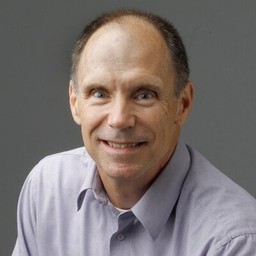The myth of ‘Cancer Alley’
Published 12:00 am Saturday, August 21, 2021
|
Getting your Trinity Audio player ready...
|
Over the years, science has continued to show that the “Cancer Alley” moniker – a term that has been used to identify the 85-mile Mississippi River Industrial Corridor that runs from Baton Rouge to New Orleans – is patently false, according to industry leaders. Nevertheless, environmental activists continue to incorrectly claim that rates of cancer along one of the largest petrochemical hubs in the nation are higher than the state average.
In its most recent volume of “Cancer in Louisiana,” the Louisiana Tumor Registry (LTR) again points out that cancer incidence and death rates in the Industrial Corridor are at, and in some instances below, those in the rest of the state.
Political and petrochemical industry leaders say the new scientific data only further proves that “Cancer Alley” is a myth.
“The facts clearly do not support the criticism heaped on our industry,” Greg Bowser, president and chief executive officer for the Louisiana Chemical Association said. “As one of the largest contributors to the state’s economy, it is imperative that we tell the truth about chemical manufacturing and work together to combat the real reasons why health outcomes in our state are so poor.”
Longstanding concerns about cancer rates along the Industrial Corridor have made national headlines as part of an environmental justice movement. Even President Joe Biden, who has made tackling environmental racism one of his top priorities, called out Louisiana’s “Cancer Alley” in one of his first speeches as president.
Yet, industry leaders and supporters say science is ignored when it comes to the state’s Industrial Corridor and its unproven link to illness.
“While the notion of a ‘Cancer Alley’ in Louisiana may have allure to some, the facts and the science as reported in the Louisiana Tumor Registry do not support any such claim,” said John King, a partner in the law firm of Breazeale, Sachse & Wilson, who has represented the chemical industry.
LTR is an internationally recognized entity charged with cataloging population-based reported cases of cancer in the state to support cancer research, control and prevention. Its most recent report, “Cancer in Louisiana Volume 35,” is based on data collected between 2013 and 2017, and the findings are consistent with others dating back decades.
While Louisiana’s cancer rates are higher than the national average, other factors contribute to these numbers. According to federal health data, factors involving lifestyle and family history significantly influence cancer risk more than environmental exposure. In every measure of contributing risk factors, including smoking, obesity, physical inactivity and access to healthcare, Louisiana largely ranks worse than the national average.
Louisiana U.S. Sen. Cassidy, a physician specializing in gastroenterology, acknowledges that Louisiana’s cancer rates are high when compared to many other parts of the country, but notes that lifestyle choices could be as much to blame as environmental factors.
The senator and others say the focus should be on how to drive cancer rates down throughout the state rather than erroneously blaming an economic engine so vital to Louisiana.
“We can do a better job of educating folks about how their lifestyle choices affect them and proactively reach out to communities in need with preventative and early detection measures,” Sen. Cassidy said. “The more we do to ensure better access to healthcare and factual information, the better chance our residents have of improving their long-term health.”
The Industrial Corridor is home to numerous petrochemical plants that anchor Louisiana’s economy, support tens of thousands of good-paying jobs and fuel the state’s budget.
A study by Loren C. Scott and Associates reported that in 2017, the chemical industry generated more than $1.1 billion in taxes and fees for the state treasury; $950 million went to local governments, paying salaries for 40 percent of the state’s approximately 20,000 public school teachers.
Bowser, whose association includes 66 member companies operating more than 100 sites throughout Louisiana, said continuing to reference the Industrial Corridor as “Cancer Alley” is not rooted in fact and is detrimental to the state.
“Propagating the myth of ‘Cancer Alley’ is not only dangerous but is an affront to the people of our great state who work tirelessly to make the industry cleaner, safer and more efficient on a daily basis,” Bowser said.
Kim Chatelain is a freelance journalist and a former NOLA.com / New Orleans Times Picayune news staffer.






